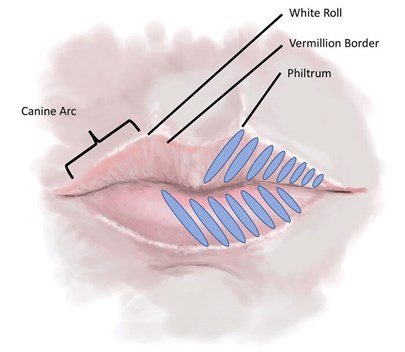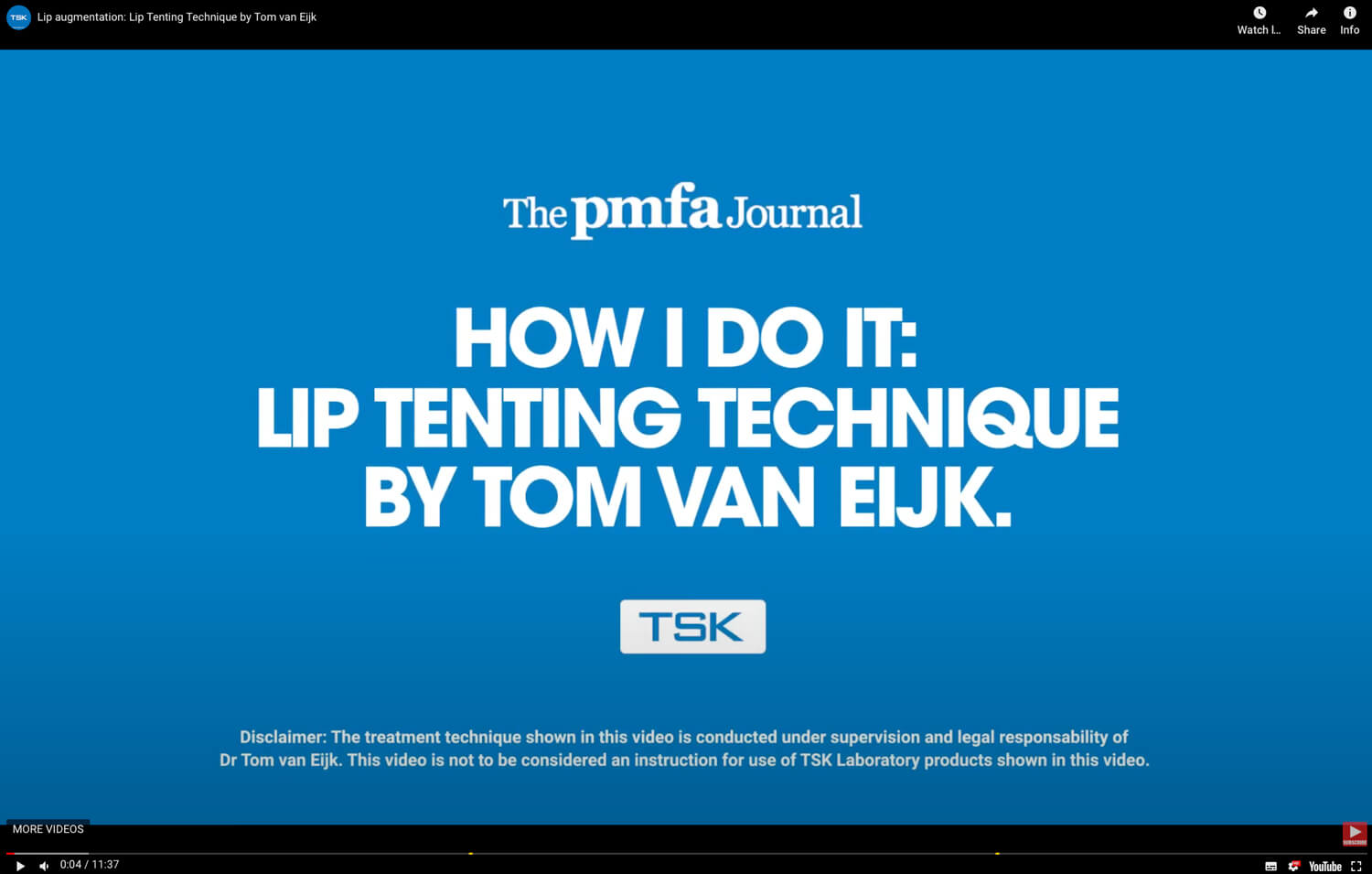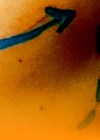Lips are one of the main features that can make a face attractive; non-surgical augmentation using injectable fillers has been in demand for several decades and is becoming more popular every year. On the other hand, ill-shaped or over filled lips can discourage patients from getting a lip treatment for fear of an unnatural appearance.
Canine arc
One of the details requested by patients is an elevated white roll of the upper lip, at the level of the canine teeth. This feature is best defined between the ages of 15 and 25; a clear and sharp canine arc is indicative of youthfulness.
Anatomy
The anatomy of the lips is complex, with skin and several types of mucosa as an ‘envelope’, filled with muscle and fat tissue. Meandering through the muscle are the labial arteries with variations in their course.
All the lip structures age, the muscles and fat tissue diminish in volume in time and the skin’s elasticity will decay, leading to structural and visible changes in the lip.
Hyaluronic acid fillers
The vast majority of lip augmentations today are performed with hyaluronic acid as filler. The physical and biological effect of injecting hyaluronic acid is not only dependent on the properties of the filler but also where the gel is deposited.
When positioned in the subdermal fat or muscular tissue, hyaluronic acid will act as a filler, shaping or ‘plumping’ the tissue. Close to the dermis, hyaluronic acid will act as a skin booster and will contribute to the quality of the interstitium and the transport of nutrients in the dermis. Injecting hyaluronic acid more superficial intra-dermally will lead to an increase in dermal strength.
Linear injection techniques
Linear injections, either with a cannula or a needle, parallel to the vermillion border, are an easy and popular way to augment. Personally, I am not in favour of these techniques for two reasons. Firstly, a longitudinal shaped filler bolus will be prone to gel displacement within its borders, especially in a very mobile area such as the lips.
Secondly, filling the vermillion border can give an unnatural, ‘duck’ shape lip, diminishing the sharp edge of the aimed youthful appearance of the canine arcs.

Lip tenting technique
In 2005 I developed this technique in order to meet several aesthetic goals in lip enhancement. I wanted the red mucosal part of the lip to become more unrolled and exposed, with the white roll elevated and sharply defined. In order to prevent dislocation of gel and palpable deposits, multiple series of injections will divide the hyaluronic acid into small portions.
To effectively enhance the strength of the white roll, all injection entry points are on this collagen-rich line. The beginning of each injection ‘stroke’ should be deep to minimise the chances of the hyaluronic acid boluses ending up too superficial and visible.
In the upper lip this projection will start at the oral commissure and will peak and end at the philtrum. Most lower lips, by nature, show projection starting a few millimetres away from the oral commissure, all the way to the middle. In order to create a natural look, these differences in the lip shape of the upper and lower lip need to be respected but may be enhanced.
Each injection will give volume in the deeper part, projection towards the contour and strength of the ‘envelope’, the white roll. Every stroke of hyaluronic acid will form a ‘tent’-pole, projecting the white roll (without filling it), hence the name ‘lip tenting technique’.
Materials
In the video a needle from TSK (30G) and the filler Restylane ‘Kysse’ are used. Designed to be effective and durable in this highly mobile anatomical area, this hyaluronic acid combines softness and longevity with an excellent safety profile.
Declaration of competing interests: The author has worked with Galderma as a clinical trainer.
COMMENTS ARE WELCOME








